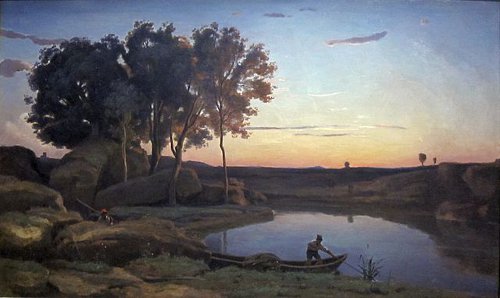
No other painter’s works have been forged as frequently as Corot’s. One day a gentleman shows up in the master’s studio, who, having bought a painting signed ‘Corot’ in a small art shop, wants to know whether it has really been painted by Corot. After one brief look at the canvas Corot shakes his head. Transported by rage, the buyer declares that he will report the art dealer to the police. ‘Report to the police?,’ the painter vents his annoyance. ‘Nonsense, that man has a wife and a child. Do you want to ruin the life of that fellow?’ ‘What do I care about wife and child? A fraud is a fraud and the law ….’ ‘The law? Bah, it won’t take much to turn this little painting into an original Corot.’ With that, the master puts the canvas on the easel and adds a few brush strokes, thus turning the fake Corot into a genuine one. ‘There,’ he murmurs in a satisfied voice, returning the painting to the buyer, ‘now you won’t be able to say anymore that this is forgery and fraud. You could see it with your own eyes how I painted it.’
— Alfred Georg Hartmann, Das Künstlerwäldchen. Maler-, Bildhauer- und Architekten-Anekdoten, 1917, quoted in Sándor Radnóti, The Fake: Forgery and Its Place in Art, 1999
